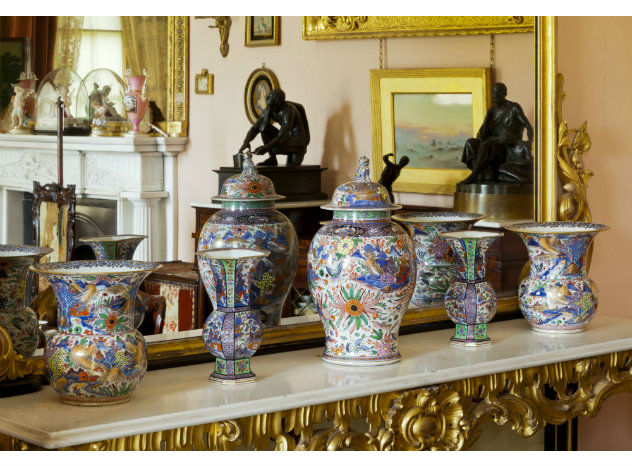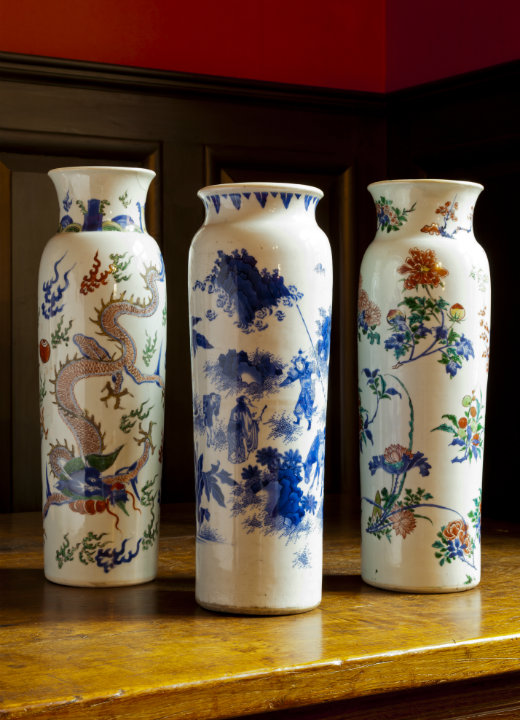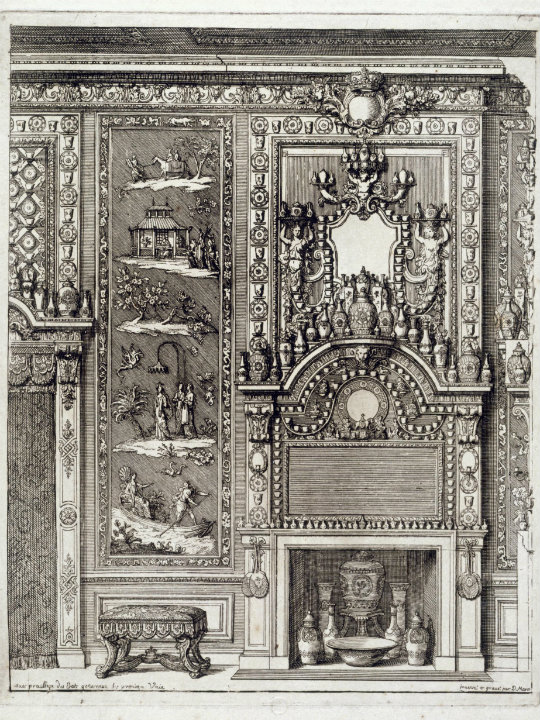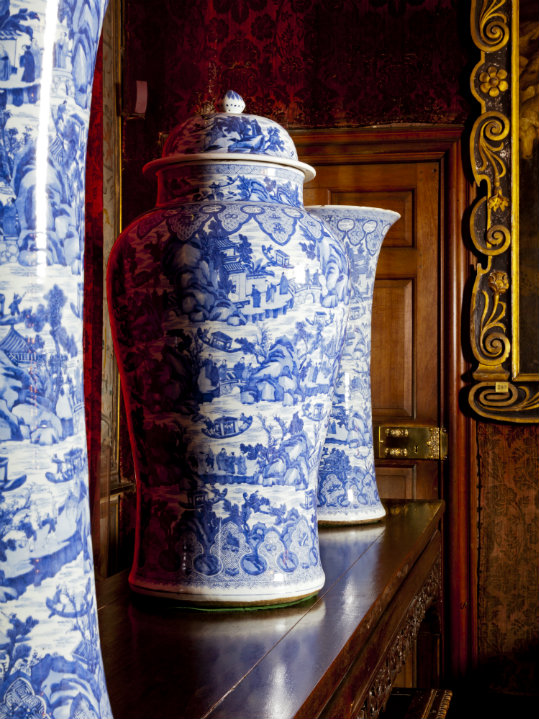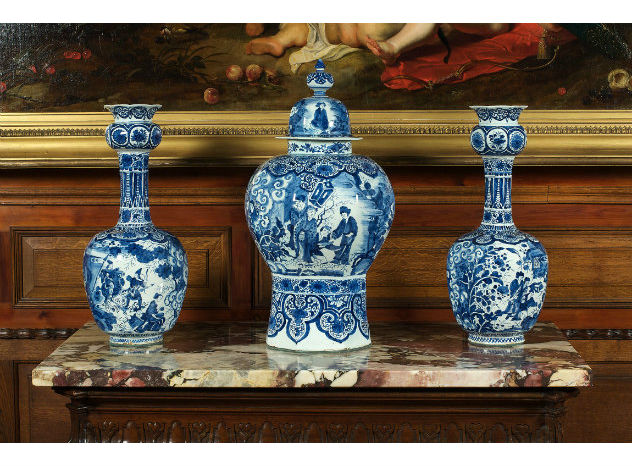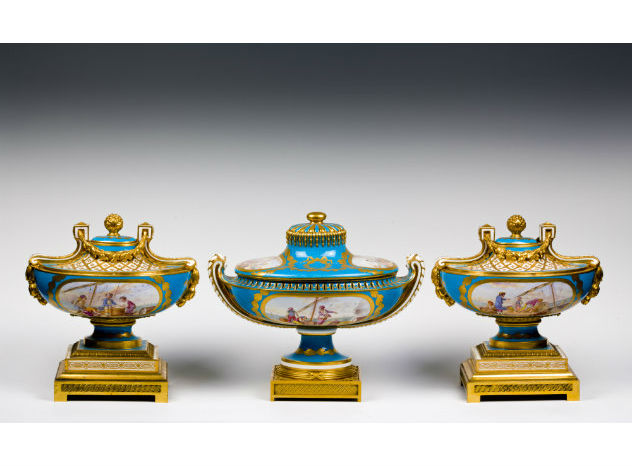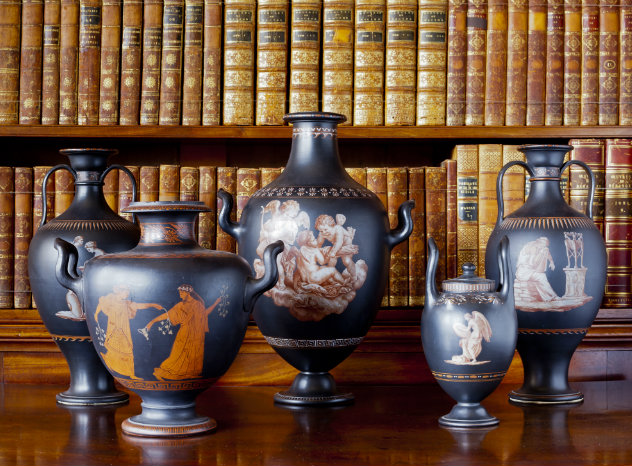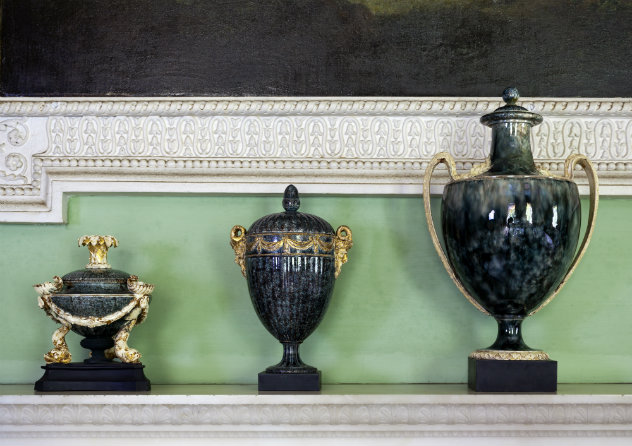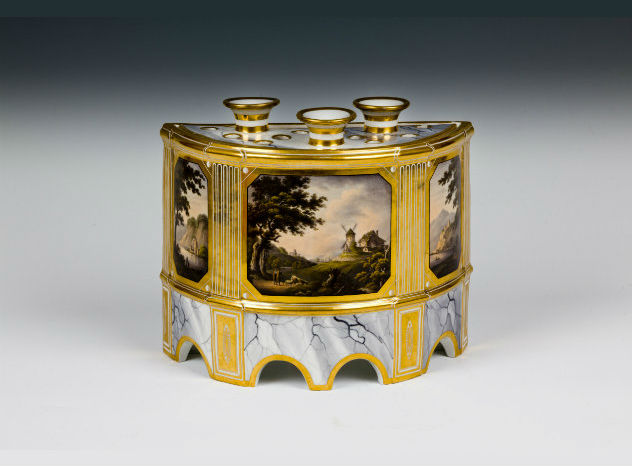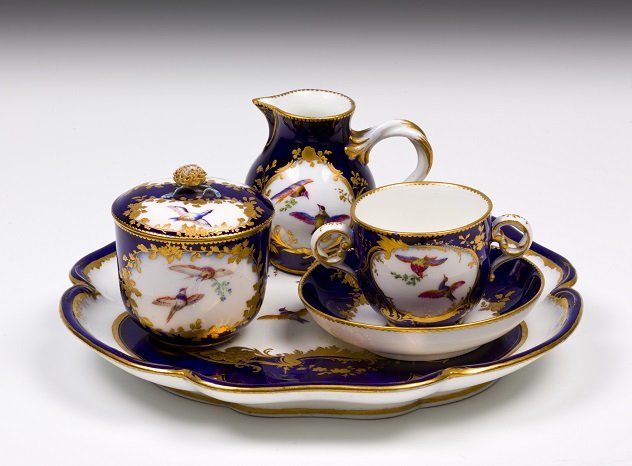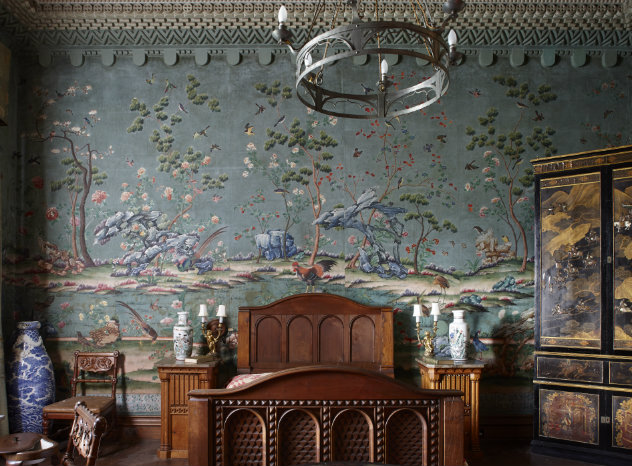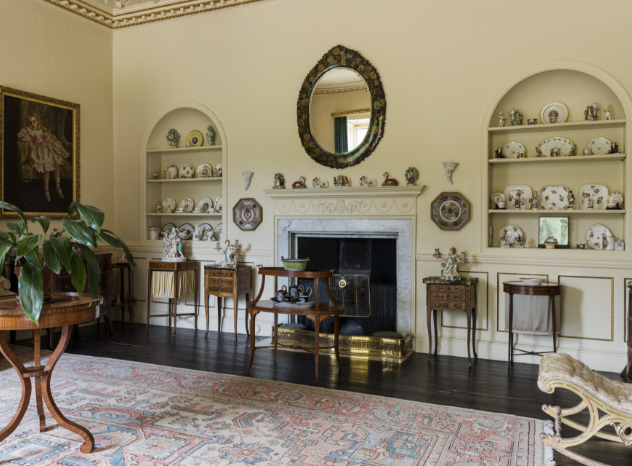What are garnitures?
Garnitures are sets of vases in pottery and porcelain with matching decoration produced between 1660 and 1830. They were displayed as ornaments, adorning or ‘garnishing’ a chimney mantel, but they were also displayed above large cupboards and cabinets and over doorways. They are also sometimes called garnitures de cheminée (‘ornaments for a chimney’).
In the study of applied arts – everyday objects enhanced or ‘applied’ with decoration – the term 'garniture' is used to suggest a set of objects. Historically, the French term, from the verb garnir, described a complete set of armour, the furniture of a bed, sets of pewter dishes, a suite of jewellery or the trappings worn by a horse, however, by the 17th century, it also described the fabric trimmings ornamenting a costume or the fire-tending equipment ornamenting a chimney, as well as food ornamenting the table or a dish.
Concerning ceramics, the term 'garniture' identifies a set of objects, usually vessels, ornamenting a specific location, such as a fireplace, a cabinet, commode, an overdoor, or the hearth.
A Chinese import and a Dutch adaptation
The idea of displaying a vase purely for decoration dates back to the early 1600s, when Chinese porcelain began to be imported into Europe. Ceramic vessels, beautifully painted in underglaze blue, were acquired in pairs and as single objects. These included large storage jars with matching lids, tall cylindrical beakers and ‘rolwagens’ - a type of vase with a narrow neck.
In Holland, where supply was the greatest, they were kept above large cabinets in symmetrical displays. The largest, often a jar, was positioned in the centre with beakers at the corners. While the colours matched, the designs did not. Such displays are frequently recorded in Dutch paintings and engravings of the 1650s.
17th-century homes were often dim and poorly lit. These shiny porcelain pieces, in pure white and brilliant blue, provided dazzling flourishes in dark spaces. Arranged symmetrically above cupboards or hooded chimneys, they were symbols of wealth, privilege and access to a network of trade that stretched across the globe.
Impact of war
The transition from the Ming to the Qing dynasty in China was a tumultuous one and after 1647, imports came to a halt. As no new porcelain was available, French merchants turned to Dutch potters in Delft who were able to produce convincing copies of Chinese porcelain, both in terms of shape and decoration. Wealthy consumers clearly wanted ‘traditional’ Chinese shapes, including Margaret Bankes of Kingston Lacy in Dorset who purchased a garniture of three Delft pieces in the 'Chinese style' in 1698.
French innovations and an ancient revival
In the 1650s, the demand for garnitures soared thanks to changes in interior design. With the introduction of smaller-scale chimney surrounds, a more prominent mantelpiece provided a focal point for small luxury goods.
In France, potters began to make vase sets in odd numbers of three, five, seven, nine and even eleven to display above chimneys. The French term ‘garniture de cheminée’ first appeared in the early 1680s describing a set of seven vessels as well as over 100 porcelain objects arranged above a chimneypiece.
'Vase madness'
The publication of a catalogue of Sir William Hamilton’s collection of Greek vases between 1766 and 1767 offered Josiah Wedgwood and Thomas Bentley a seemingly infinite source for vase designs. In 1769, Wedgwood, the self-proclaimed 'Vase-maker General to the Universe' tapped into the public's insatiable appetite for vases, which he described as a 'violent Vase Madness'.
Wedgwood’s black stoneware, known as ‘black basalt’ was ideal for recreating the style of Greek vase painting that flourished from the late 6th to the late 4th century BC. Hundreds of vase shapes were produced, from which customers could assemble their own garnitures.
More readily available, more functional
As vase sets became more affordable to the middle classes, they also needed to perform additional functions to justify the expense. Vessels were often supplemented with specially made covers that allowed for flower arranging, bulb growing, porpourri storage and even incense burning. Used as such, these vase sets filled domestic interiors with a variety of fragrances and aromas throughout the year.
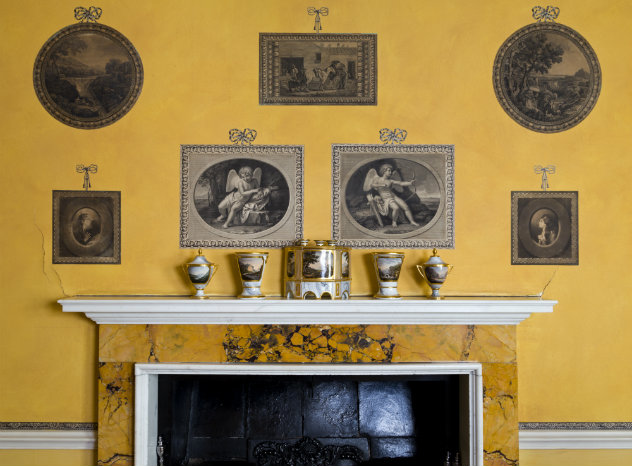
Barr, Flight and Barr garniture in the Print Room at Blickling Hall
©National Trust Images/Robert Morris
Between 1660 and 1830, almost every ceramic vessel made in Britain and Europe was conceived as part of a vase set. Customers could purchase just one vase, a pair, or dozens based on their need, wealth and status.
Ultimately, the fashion for displaying garnitures declined. By the 1870s, single, ‘unique’ vases were championed above formal sets. Garnitures were separated and sometimes lost or damaged through sales or family division. Today, surviving vase sets are rarer than single, stand alone pieces. For this reason, the National Trust's collection of vase sets is truly exceptional.
Further information
Patricia F. Ferguson, Ceramics: 400 years of British collecting in 100 masterpieces, Philip Wilson Publishers, London: 2016.
Patricia F. Ferguson, Garnitures: Vase Sets From National Trust Houses, V&A Publishing in association with the National Trust, London: 2016.
